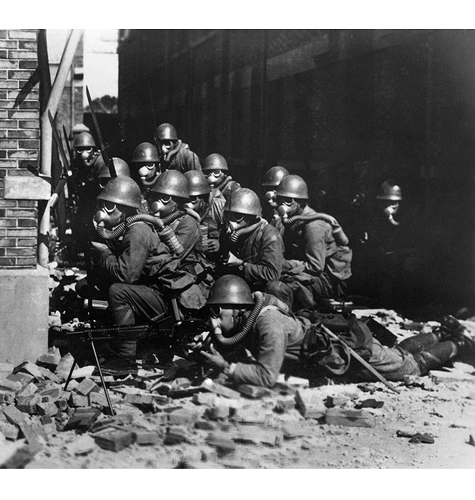The Spratly Islands dispute is an ongoing territorial dispute between Brunei, China (People’s Republic of China), Malaysia, the Philippines, Taiwan, and Vietnam, concerning ownership of the Spratly Islands, a group of islands and associated “maritime features” (reefs, banks, cays, etc.) located in the South China Sea. The dispute is characterised by diplomatic stalemate and the employment of military pressure techniques (such as military occupation of disputed territory) in the advancement of national territorial claims. All except Brunei occupy some of the maritime features.
There has been a sharp rise in media coverage owing mainly to China’s increasingly vocal objection to the presence of American naval vessels transiting the area in order to assert the right to freedom of navigation within international waters.
Most of the “maritime features” in this area have at least six names: The “International name”, usually in English; the “Chinese name”, sometimes different for PRC and ROC, (and also in different character-sets); the Vietnamese, Philippine and Malaysian names, and also, there are alternate names, (e.g. Spratly Island is also known as Storm Island), and sometimes names with “colonial” origins (French, Portuguese, Spanish, British, etc.).
The Spratly Islands are important for economic and strategic reasons. The Spratly area holds potentially significant, but largely unexplored, reserves of oil and natural gas; it is a productive area for world fishing; it is one of the busiest areas of commercial shipping traffic; and surrounding countries would get an extended continental shelfif their claims were recognised. In addition to economic incentives, the Spratlys sit astride major maritime trade routes to Northeast Asia, giving them added significance as positions from which to monitor maritime activity in the South China Sea and to potentially base and project military force from. In 2014, China drew increased international attention due to its dredging activities within the Spratlys, amidst speculation it is planning to further develop its military presence in the area. In 2015 satellite imagery revealed that China was rapidly constructing an airfield on Fiery Cross Reef within the Spratlys whilst continuing its land reclamation activities at other sites.
Only China (PRC), Taiwan (ROC), and Vietnam have made claims based on historical sovereignty of the islands.
The Philippines, however, claims part of the area as its territory under UNCLOS, an agreement parts of which have been ratified by the countries involved in the Spratly islands dispute.
Reasons for the dispute
There are multiple reasons why the neighbouring nations in particular, and the rest of the world in general, would be interested in the Spratly Islands.
Hydrocarbons
In 1968, oil was discovered in the region.
The Geology and Mineral Resources Ministry of the People’s Republic of China (PRC) has estimated that the Spratly area holds oil and natural gas reserves of 17.7 billion tons (1.60 × 1010 kg),[citation needed] compared to the 13 billion tons (1.17 × 1010 kg) held by Kuwait, placing it as, potentially, the fourth largest reserve bed in the world. The United States Energy Information Administration contests this, estimating almost no oil and less than 100 billion cubic feet of natural gas exists in fields near the Spratly Islands.
Still, these large potential reserves have assisted in intensifying the territorial claims of the neighbouring countries.
In 1968 and 1970, the Philippines started to take their territorial claims more seriously and stationed troops on three islands which had been claimed by the adventurer Tomas Cloma as part of Freedomland.
In 1973, Vietnamese troops were stationed on five islands.
On 11 March 1976, the first major Philippine oil discovery occurred off the coast of Palawan, near the Spratly Islands territory. In 2010, these oil fields supplied 15% of all petroleum consumed in the Philippines.
In 1992, the PRC and Vietnam granted oil exploration contracts to US oil companies that covered overlapping areas in the Spratlys. In May 1992,[14] the China National Offshore Oil Corporation (CNOOC) and Crestone Energy (a US company based in Denver, Colorado) signed a co-operation contract for the joint exploration of the Wan’an Bei-21 block, a 25,155 square kilometres (9,710 sq mi) section of the southwestern South China Sea that includes Spratly Island areas.Part of the Crestone’s contract covered Vietnam’s blocks 133 and 134, where PetroVietnam, PetroStar Energy(USA) and ConocoPhillips Vietnam Exploration & Production, a unit of ConocoPhillips, agreed to evaluate prospects in April 1992. This led to a confrontation between China and Vietnam, with each demanding that the other cancel its contract.
Commercial fishing
The region is one of the world’s most productive areas for commercial fishing. In 2010, the Western Central Pacific (excluding the northernmost reaches of the South China Sea closest to the PRC coast) accounted for 14% of the total world catch at 11.7 million tonnes. This was up from less than 4 million tonnes in 1970.
The PRC has predicted that the South China Sea holds combined fishing and oil and gas resources worth one trillion dollars.[citation needed] There have already been numerous clashes between the PRC and the Philippines, PRC and Vietnam, and between other nations over “foreign” fishing vessels in Exclusive Economic Zones (EEZs), and the media[which?] regularly report the arrest of Chinese fishermen. In 1984, Brunei established an exclusive fishing zone encompassing Louisa Reef in the southeastern Spratly Islands.
Commercial shipping
The region is one of the busiest shipping lanes in the world. During the 1980s, at least 270 ships passed through the Spratly Islands region each day. More than half of the world’s supertanker traffic, by tonnage, passes through the region’s waters every year. Tanker traffic through the South China Sea is over three times greater than through the Suez Canal and five times more than through the Panama Canal; 25% of the world’s crude oil passes through the South China Sea.
Pubblicazione gratuita di libera circolazione. Gli Autori non sono soggetti a compensi per le loro opere. Se per errore qualche testo o immagine fosse pubblicato in via inappropriata chiediamo agli Autori di segnalarci il fatto è provvederemo alla sua cancellazione dal sito









